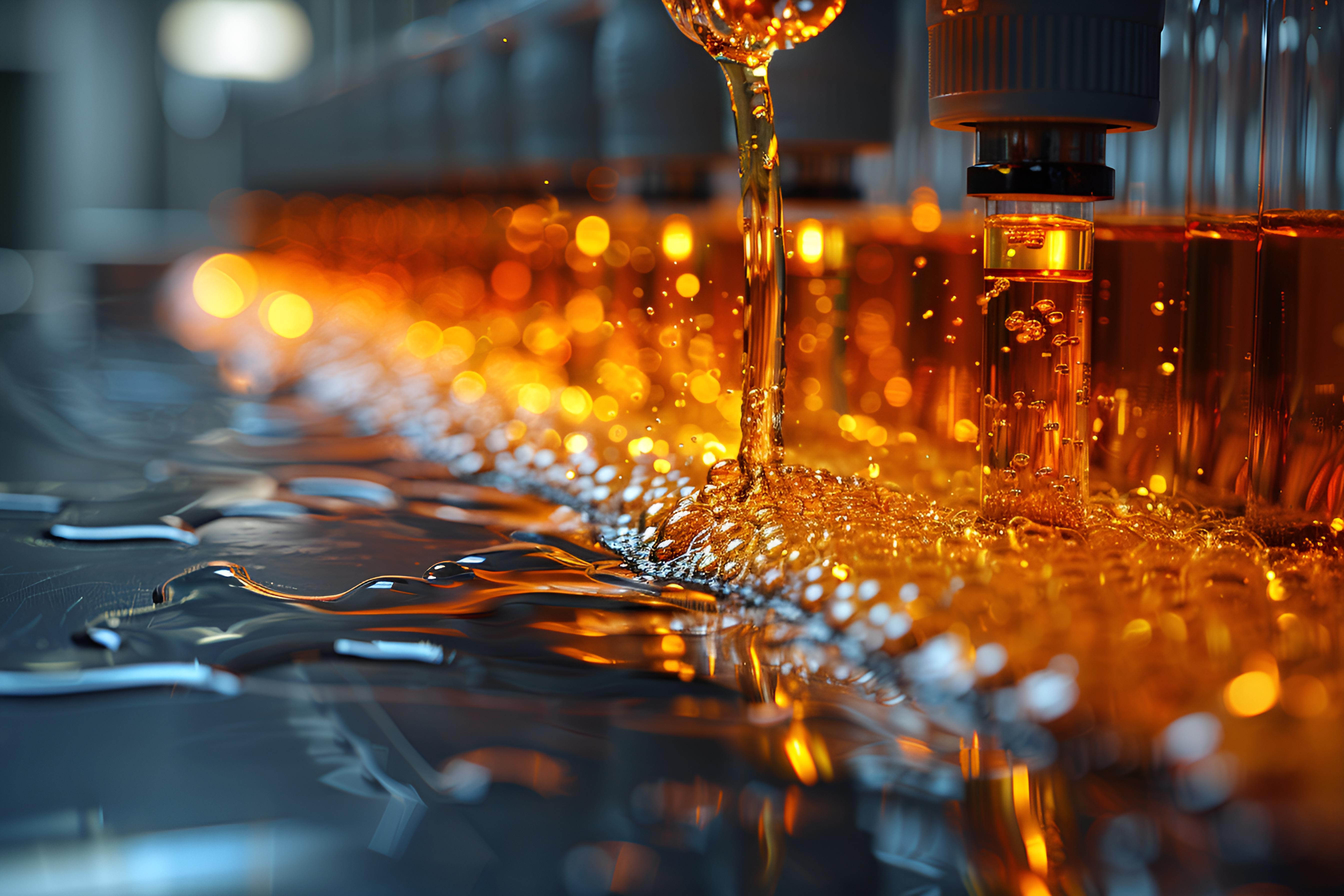Email format error
Email cannot be empty
Email already exists
6-20 characters(letters plus numbers only)
The password is inconsistent
Email format error
Email cannot be empty
Email does not exist
6-20 characters(letters plus numbers only)
The password is inconsistent


The Secrets Behind Your Favorite Cosmetics: A Dive into Cosmetic Ingredients
When you open your makeup bag, what do you see? A rainbow of colors, various textures, and maybe even a few products you bought on a whim. Cosmetics have become an essential part of our daily lives, enhancing our features, boosting our confidence, and allowing us to express our creativity. But have you ever stopped to wonder about the ingredients in these products? What goes into the magic of cosmetics? Today, we’re diving deep into the world of cosmetic ingredients, exploring their origins, benefits, and how they work together to create the beauty products we love.
A Brief History of Cosmetics
The use of cosmetics dates back thousands of years. Ancient Egyptians, for example, used kohl to line their eyes, believing it had protective properties against the harsh sun and evil spirits. Meanwhile, in ancient Rome, women used lead-based face powders to achieve a pale complexion, unaware of the toxic effects of such substances. Fast forward to today, and while we have made significant strides in cosmetic formulation and safety, the fascination with cosmetics remains strong.
Understanding Cosmetic Ingredients
Cosmetic ingredients can be grouped into various categories based on their functions. Here are a few of the most common types you'll encounter:
Emollients: These ingredients are designed to soften and smooth the skin. They work by creating a barrier on the skin’s surface, preventing moisture loss. Common emollients include oils (like jojoba and almond oil) and fatty acids.
Humectants: Humectants attract water from the environment into the skin, helping to keep it hydrated. Ingredients like glycerin and hyaluronic acid are popular humectants found in moisturizers and serums.
Surfactants: These ingredients help to cleanse the skin by breaking down oils and dirt. You’ll find surfactants in cleansers and shampoos, where they create that satisfying lather we all love.
Preservatives: Since cosmetics are often exposed to air and moisture, preservatives are essential to prevent microbial growth and extend shelf life. Common preservatives include parabens and phenoxyethanol.
Colorants: These ingredients give cosmetics their vibrant hues. From the blush on your cheeks to the lipstick on your lips, colorants can be derived from natural sources, like beet juice, or be synthetic.
Fragrances: While they may make products smell delightful, fragrances can be a double-edged sword. Some people are allergic to certain synthetic fragrances, making it important to choose products carefully.
Active Ingredients: Many cosmetics boast active ingredients that provide specific benefits, like anti-aging or acne treatment. Retinol, vitamin C, and salicylic acid are popular examples that target various skin concerns.
The Rise of Natural and Organic Ingredients
In recent years, there has been a significant shift towards natural and organic cosmetic ingredients. Consumers are becoming more conscious about what they put on their skin and are increasingly seeking products that are free from synthetic chemicals, parabens, and artificial fragrances.
What Are Natural Ingredients?
Natural ingredients come from plants, minerals, and other naturally occurring substances. They are often less processed than their synthetic counterparts, making them appealing to those who prioritize clean beauty. Common natural ingredients include:
- Aloe Vera: Known for its soothing properties, aloe vera is often used in moisturizers and after-sun products.
- Tea Tree Oil: With its antibacterial properties, tea tree oil is popular in acne treatment products.
- Shea Butter: This nourishing ingredient is commonly found in creams and lotions for its ability to deeply hydrate the skin.
The Organic Revolution
Organic cosmetics take the natural ingredient trend a step further by ensuring that the ingredients are grown without synthetic fertilizers, pesticides, or genetically modified organisms (GMOs). Brands that focus on organic products often highlight their commitment to sustainability and ethical sourcing.
The Science Behind Formulation
Creating a cosmetic product is not just about mixing ingredients; it’s a science. Formulators must consider the stability, efficacy, and safety of the product. Here are some key factors involved in cosmetic formulation:
pH Balance
The pH of a cosmetic product is crucial for its performance and safety. The skin has a natural pH of around 4.5 to 5.5, so formulators aim to create products that maintain this balance. If a product is too alkaline, it can disrupt the skin barrier, leading to irritation and dryness.
Texture and Consistency
Texture is a critical factor that influences consumer preference. Whether it’s a lightweight gel, creamy lotion, or rich balm, the feel of a product on the skin can determine its appeal. Formulators use various thickeners and emulsifiers to achieve the desired consistency.
Compatibility
Different ingredients can interact in unexpected ways, so formulators must ensure that all components work well together. This is especially important when combining actives, as some can neutralize each other’s effects.
The Role of Testing
Before a cosmetic product hits the shelves, it undergoes rigorous testing to ensure its safety and efficacy. There are several types of tests that products may go through:
- Stability Testing: This evaluates how a product maintains its appearance, texture, and efficacy over time under various conditions.
- Irritation Testing: Formulators conduct patch tests to ensure that the product doesn’t cause allergic reactions or irritations on the skin.
- Efficacy Testing: For products claiming specific benefits (like anti-aging), efficacy testing is conducted to measure the results on real consumers over time.

The Importance of Transparency
In today’s beauty market, transparency is crucial. Consumers are demanding to know what’s in their cosmetics, and brands are responding by providing clearer ingredient lists and explanations. This shift has led to a growing trend of brands creating products that are not only effective but also easy to understand.
Reading Labels
Understanding cosmetic labels can empower consumers to make informed choices. Here are a few tips for decoding ingredient lists:
- Look for the First Five Ingredients: Ingredients are listed in descending order of concentration. The first five ingredients usually comprise the majority of the product.
- Watch Out for Red Flags: Certain ingredients, like sulfates and parabens, have come under scrutiny for their potential negative effects. While some are safe, it’s good to do your research.
- Research Ingredients: If you’re unsure about an ingredient, look it up! There are numerous resources online that provide detailed information about the safety and benefits of various cosmetic ingredients.
DIY Cosmetics: The Fun and Risks
With the rise of natural and organic beauty, many consumers are turning to DIY cosmetics. Creating your own skincare and makeup products can be fun and rewarding, but it also comes with risks. Here’s what to consider:
The Benefits of DIY
- Customization: You can tailor products to your specific skin type and concerns.
- Cost-Effective: Making your own cosmetics can save money in the long run, especially for high-quality ingredients.
- Control Over Ingredients: You know exactly what you’re putting on your skin, avoiding unwanted chemicals.
The Risks
- Lack of Preservation: Homemade products often lack preservatives, making them prone to contamination and spoilage.
- Potential for Irritation: Some natural ingredients can still cause allergic reactions. Always patch test new formulations before applying them widely.
- Inaccurate Measurements: Getting the ratios wrong can affect the product’s effectiveness and safety.
The Future of Cosmetics: Innovation and Sustainability
As we look to the future, the cosmetics industry is evolving in exciting ways. Innovations in formulation and sustainable practices are paving the way for the next generation of beauty products. Here are some trends to watch:
Sustainable Packaging
Brands are increasingly focused on eco-friendly packaging solutions. Refillable containers, biodegradable materials, and minimalistic designs are becoming the norm, helping to reduce waste.
Biotechnology in Cosmetics
Biotechnology is making waves in the beauty industry. Researchers are developing ingredients from renewable sources, like lab-grown collagen and bio-fermented extracts, which can be more sustainable and effective than traditional options.
Personalization
With advancements in technology, personalized beauty products are becoming more accessible. Brands are utilizing algorithms and consumer data to create tailored skincare and makeup solutions, ensuring that every individual’s unique needs are met.
Conclusion
The world of cosmetics is complex and ever-evolving. Understanding cosmetic ingredients not only enhances your beauty routine but also empowers you as a consumer. As we navigate this exciting landscape, let’s celebrate the artistry and science behind our favorite products. From ancient rituals to modern formulations, the journey of cosmetics is a testament to human creativity and innovation. So, the next time you apply your favorite lipstick or moisturizer, take a moment to appreciate the careful thought and expertise that went into creating it.
